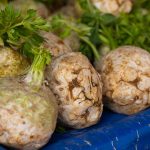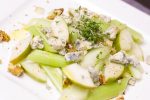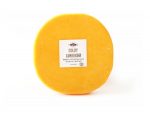Cheeses are one of the great cultural food markers and one in particular, shanklish is an important economic product on the Middle East. Shanklish cheese which can also be known as shinklish, shankleesh, sorke, or sürke is a cow or sheep derived milk cheese found mainly in the Lebanon and Israel, but there are variants in Egypt and Syria. It was generally made in areas where the climate was harsh, especially the dry, mountainous regions close to the coast.
The cheese is made by a dry salting (2%w/w) acid-coagulating process. It is generally rolled into small balls of about 4-6cm diameter and sometimes covered with Aleppo pepper, thyme or the spice mix, za’atar. Chili powder is another popular covering especially in Syria where the ball of cheese takes on a reddish appearance.
In the process, the cheese is allowed to mature and ripen with blue-green molds in jars for about 2 months where it forms a skin as it dries. It lasts for up to a year where it is stored in olive oil. (Hilali et al., 2011).
The flavour and texture of the cheese is highly variable because of the extreme variations in processing and quality of the milk used. It could be regarded as a blue-green cheese in the same stable as Dolcellate and Gorgonzola, especially as the cheese hardens in the maturing process. Very often extra spices including aniseeds and chilli are added to give extra flavour. Overheated butter milk often produces a more crumbly cheese. Too high a fat content produces highly undesirable rancid notes.
Mold growth is a key component of the cheese and there have been investigations into the possible toxins generated, especially aflatoxins. Typical molds are found in the Aspergillus family. There is a need to reduce the content of these aflatoxins to meet USA FDA regulations if they are to be exported. One way to reduce aflatoxin production is to reduce the moisture content of the cheese (Salameh et al., 2016).
Shanklish cheese is usually eaten with small pieces of onion, tomato, salads and green leaves. Within the Lebanese menu, it is served within a meze.
References:
Hilali, M., El-Mayda, E., & Rischkowsky, B. (2011). Characteristics and utilization of sheep and goat milk in the Middle East. Small Ruminant Research, 101(1), pp. 92-101.
Salameh, C., Banon, S., Hosri, C., & Scher, J. (2016). An overview of recent studies on the main traditional fermented milks and white cheeses in the Mediterranean region. Food Reviews International, 32(3), pp. 256-279.



Leave a Reply